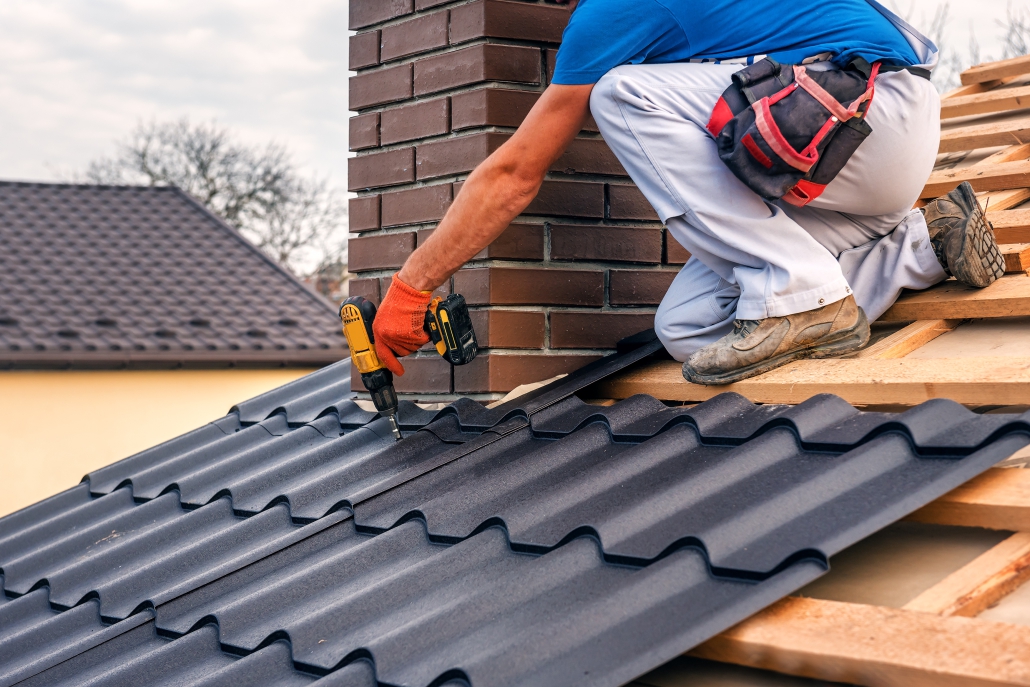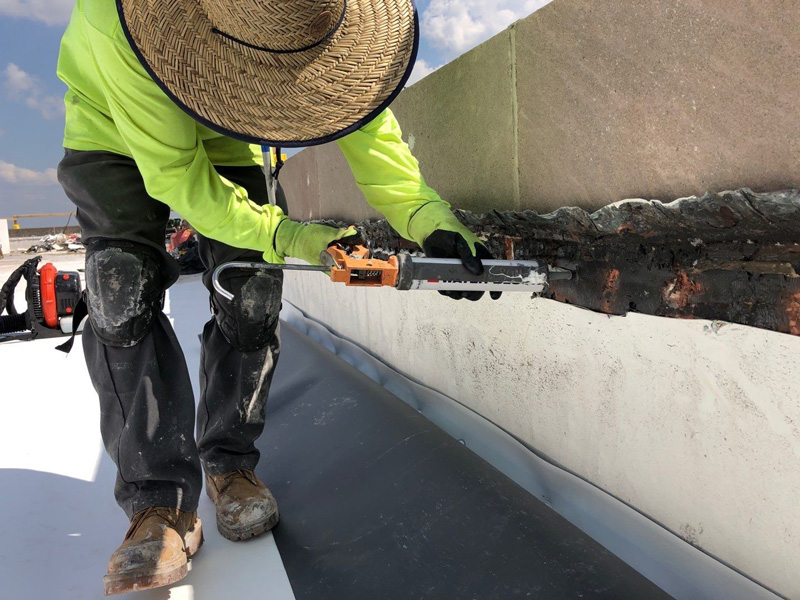A Comprehensive Guide to Effective Roof Apartment Roofing Installation
The ins and outs of level roofing installation demand a precise technique, starting with a comprehensive understanding of various level roofing system types and the necessary materials needed for optimum efficiency. A successful installment pivots not only on the choice of products however additionally on the preparation and implementation of each step involved in the process.
Understanding Flat Roofing System Kind
When taking into consideration flat roofing systems, it is vital to comprehend the various types offered, as each deals distinctive advantages and disadvantages customized to certain needs. The most typical sorts of flat roofs consist of Built-Up Roof covering (BUR), Modified Bitumen, and Single-Ply membrane layers.
Built-Up Roof covering contains numerous layers of asphalt and gravel, giving superb durability and climate resistance. It is especially advantageous in locations vulnerable to extreme climate condition but may need more upkeep due to its complicated construction.
Customized Asphalt is a popular choice for its simplicity of setup and adaptability. It usually employs a self-adhesive or torch-applied approach, which can be advantageous for fast repair work and lasting efficiency. Its life expectancy can be shorter contrasted to BUR.
Single-Ply membranes, including Thermoplastic Olefin (TPO) and Ethylene Propylene Diene Monomer (EPDM), are identified for their lightweight nature and energy effectiveness. These materials are frequently favored for business buildings because of their cost-effectiveness and ease of installment (Cleveland Roofing Specialists). Nevertheless, they might not offer the exact same degree of insulation as various other alternatives.
Each roof kind calls for cautious factor to consider based upon climate, spending plan, and certain task requirements.
Vital Materials for Flat Roofing
A selection of crucial materials are vital for the successful installation of level roofing systems. The option of materials straight impacts durability, performance, and overall efficiency.
One of the primary materials is the roof covering membrane layer, which can be created from different substances such as polycarbonate polyolefin (TPO), ethylene propylene diene monomer (EPDM), or PVC. Each kind provides one-of-a-kind advantages, consisting of UV resistance and adaptability, which are vital for long term performance.
In enhancement to the membrane, insulation products play a significant function in energy efficiency. Inflexible foam boards or polyisocyanurate insulation are popular choices, as they supply outstanding thermal resistance and wetness administration.
Additionally, roof adhesives and sealers are important for guaranteeing a leak-proof setup. These items should be suitable with the selected membrane to avoid wear and tear over time.
Preparing for Installment
Appropriate preparation is vital for an effective flat roof setup, as it lays the groundwork for a resilient and effective roof system. Begin by performing an extensive assessment of the existing roofing system structure.
Next, collect all necessary devices and materials, ensuring that they satisfy sector requirements. This includes waterproof membranes, insulation, blinking, and fasteners. Acquaint on your own with the maker's specifications, as adherence to these standards is essential for service warranty objectives.
Furthermore, guarantee that the workplace is free from debris and blockages to facilitate risk-free and efficient installation. Take into consideration climate condition; prevent setup during heavy rain or extreme temperature levels, which can influence product efficiency. Inform any type of occupants of the structure about the approaching job to guarantee security and minimize disturbances. By taking these preparatory steps, you can boost the chance of an effective level roofing system setup that meets both visual and architectural requirements.
Step-by-Step Installation Refine
With the foundation developed through detailed preparation, the next stage involves performing the flat roof covering setup methodically. Begin by making sure that the architectural deck is complimentary and clean from debris. Next, set up a vapor barrier to avoid dampness buildup underneath the roofing product. This step is essential for maintaining the roof's integrity in time.
Complying with the vapor barrier installment, set insulation boards, guaranteeing they fit tightly with each other to minimize thermal bridging. Protect the insulation with ideal bolts based on the roof type and local building regulations. When the insulation remains in area, it's time to apply the roof covering membrane. Depending on the selected material-- such as TPO, EPDM, or changed bitumen-- set up the membrane according to the manufacturer's requirements.
Ensure appropriate overlap at seams and edges to develop a water tight seal. Use adhesives, mechanical fasteners, or heat welding as required. Ultimately, install blinking around perimeters, vents, and any kind of roof penetrations to boost waterproofing. After installation, carry out a thorough assessment to determine any type of possible issues before concluding the project, ensuring a dependable and robust flat roof system.
Maintenance Tips for Durability
Normal upkeep is necessary to make certain the long life and efficiency of a flat roofing system. One of the main jobs is to conduct regular inspections at the very least twice like this a year, preferably in spring and fall. Throughout these examinations, try to find indicators of my latest blog post wear, such as sores, cracks, or merging water, which can show underlying issues.

Making certain appropriate water drainage is critical to stop water buildup. Inspect and clear gutters, downspouts, and scuppers to assure unobstructed water circulation. In addition, examine seals around vents, skylights, and other penetrations for any kind of indications of degeneration, using caulk or sealant as required to keep a leak-proof obstacle.
Last but not least, think about specialist maintenance services every few years for comprehensive inspections and repair work. By sticking to these maintenance ideas, you can dramatically extend the life of your flat roof covering, ensuring it stays a dependable shield versus the aspects.
Final Thought
Effective level roofing setup necessitates an organized method incorporating comprehensive assessments, product option, and careful preparation. Sticking to the outlined steps during the setup procedure makes certain the appropriate application of roof membrane layers and insulation while enhancing waterproofing via effective blinking installment.
The intricacies of flat roofing installment demand a meticulous approach, starting with a thorough understanding of different flat roof types and the necessary products needed for optimum performance.Appropriate preparation is necessary for an effective level roofing installation, as it lays the foundation for a reliable and long lasting roof covering system. After installation, carry out a detailed evaluation to identify any possible issues prior to concluding the job, making certain a robust and trusted level roof system.
